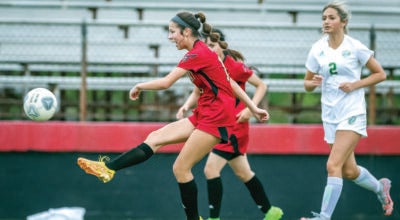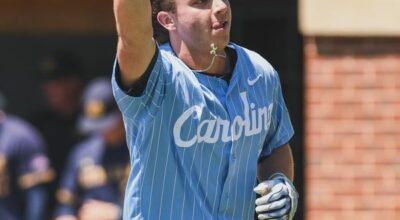NASCAR: No changes planned at Talladega despite wreck
Published 12:00 am Tuesday, April 28, 2009
By Jenna Fryer
Associated Press
CHARLOTTE ó Despite injuries to fans from flying debris, NASCAR’s satisfied with its safety standards, saying the fence at Talladega Superspeedway did what it was supposed to do ó keep Carl Edwards’ car out of the grandstands.
In a spectacular last-lap accident, Edwards’ car sailed upside-down into the frontstretch fence, which bowed but held, before the battered vehicle returned to the track. Blake Bobbitt, one of seven injured by debris, remained hospitalized Monday with a broken jaw.
“One of our primary goals over the years is to build a retaining fence that keeps the cars and parts and pieces out of the spectator areas. Nothing is bullet proof,” NASCAR spokesman Jim Hunter said Monday. “The retaining fence did what it’s supposed to do. There was some debris that went into the grandstand, that fortunately did not invoke serious injury. If there is something we come up with as we analyze this accident … we’ll make it as safe as we humanly can.”
The frightening ending marred what was easily NASCAR’s best race of the season. There were 57 lead changes among 25 different drivers, and a nail-biting last-lap charge from Edwards and Brad Keselowski, who teamed together to run down Ryan Newman and Dale Earnhardt Jr.
NASCAR vice president Robin Pemberton acknowledged the fine line between creating exciting racing and keeping the competitors safe.
“It’s tough to balance out,” he said. “Our series is 22 different race tracks … with speeds from 100 mph to well over 200 mph, and not every driver likes every race track that we run on. That’s part of our season and that’s part of what makes it work.”
NASCAR had no immediate solutions as to how to prevent future similar accidents but will evaluate the fence height surrounding the race track and beef up its policing of aggressive driving and blocking, when one car deliberately moves into the path of a competing car trying to pass it.
On the final lap of Sunday’s race, Edwards tried to block eventual race-winner Keselowski’s pass as they hurtled down the frontstretch at nearly 200 mph. Edwards slid low when Keselowski dipped underneath him, and the block caused Keselowski to hook the left rear of Edwards’ car, sending it spinning into the path of Newman.
Newman then hit Edwards’ car, causing it to fly off the track and into the safety fence. Edwards emerged from the fiery wreckage unscathed, and jogged across the finish line.
“Quite frankly, these situations that come up from time to time are a one-off ó you don’t necessarily foresee (them) and they are hard to recreate,” Pemberton said.
The accident renewed scrutiny of restrictor-plate racing, which produces thrilling racing but carries inherent risk.
The horsepower-sapping restrictor plates are used at Daytona and Talladega ó NASCAR’s two fastest ó to combat the high speeds. A square aluminum plate is installed in each car to limit its engine’s power, slowing the car by reducing the amount of air that flows into the carburetor.
There were three spectacular crashes Sunday: A 13-car wreck seven laps into the race; a 10-car accident with nine laps to go; and Edwards’ airborne flight into the fence on the final lap.
Most of the drivers were highly critical of the racing afterward.
Edwards, grateful the fence held, warned that restrictor-plate racing can kill someone.
“I don’t know if I could live with myself if I ended up in the grandstands,” Edwards said. “We’ll race like this until we kill somebody, then (NASCAR) will change it.”





